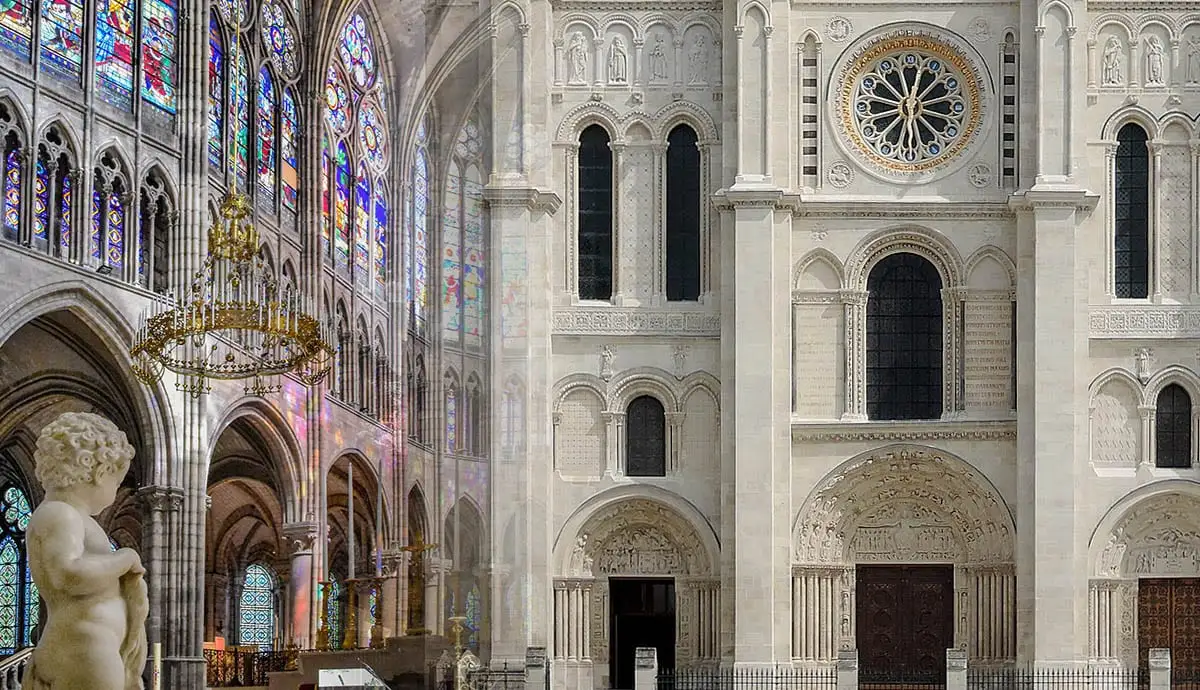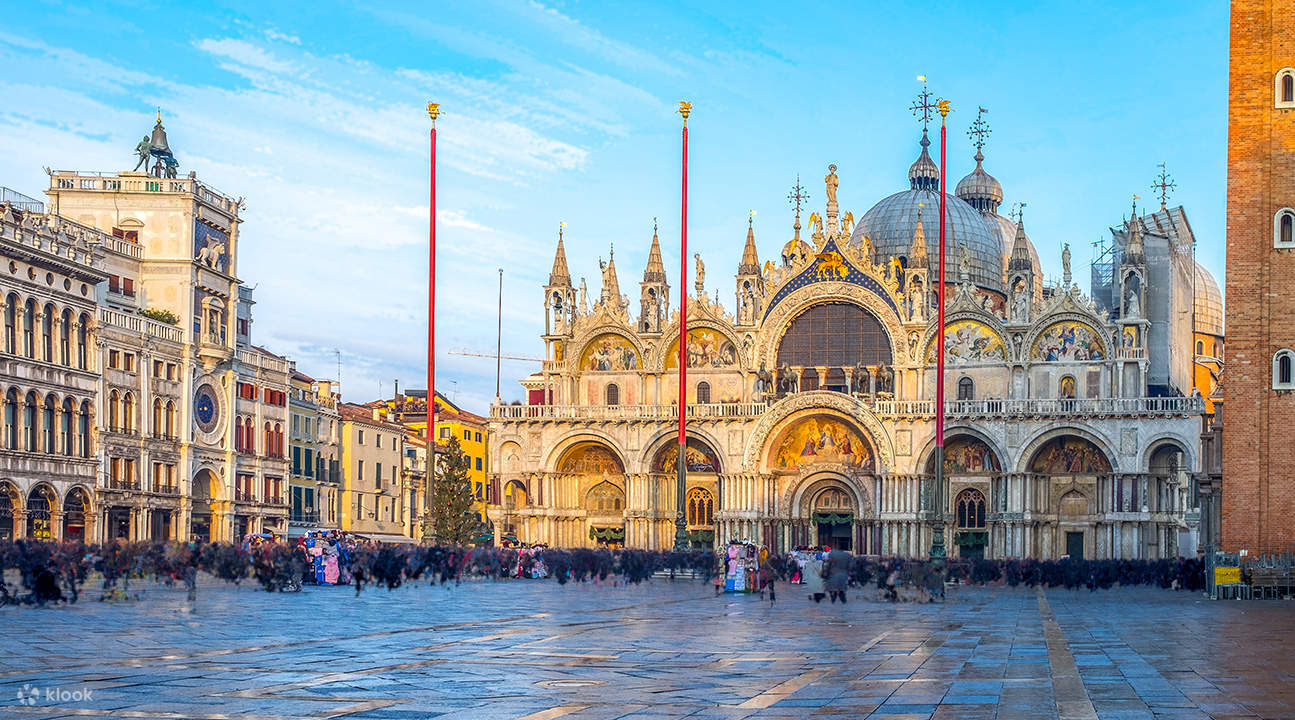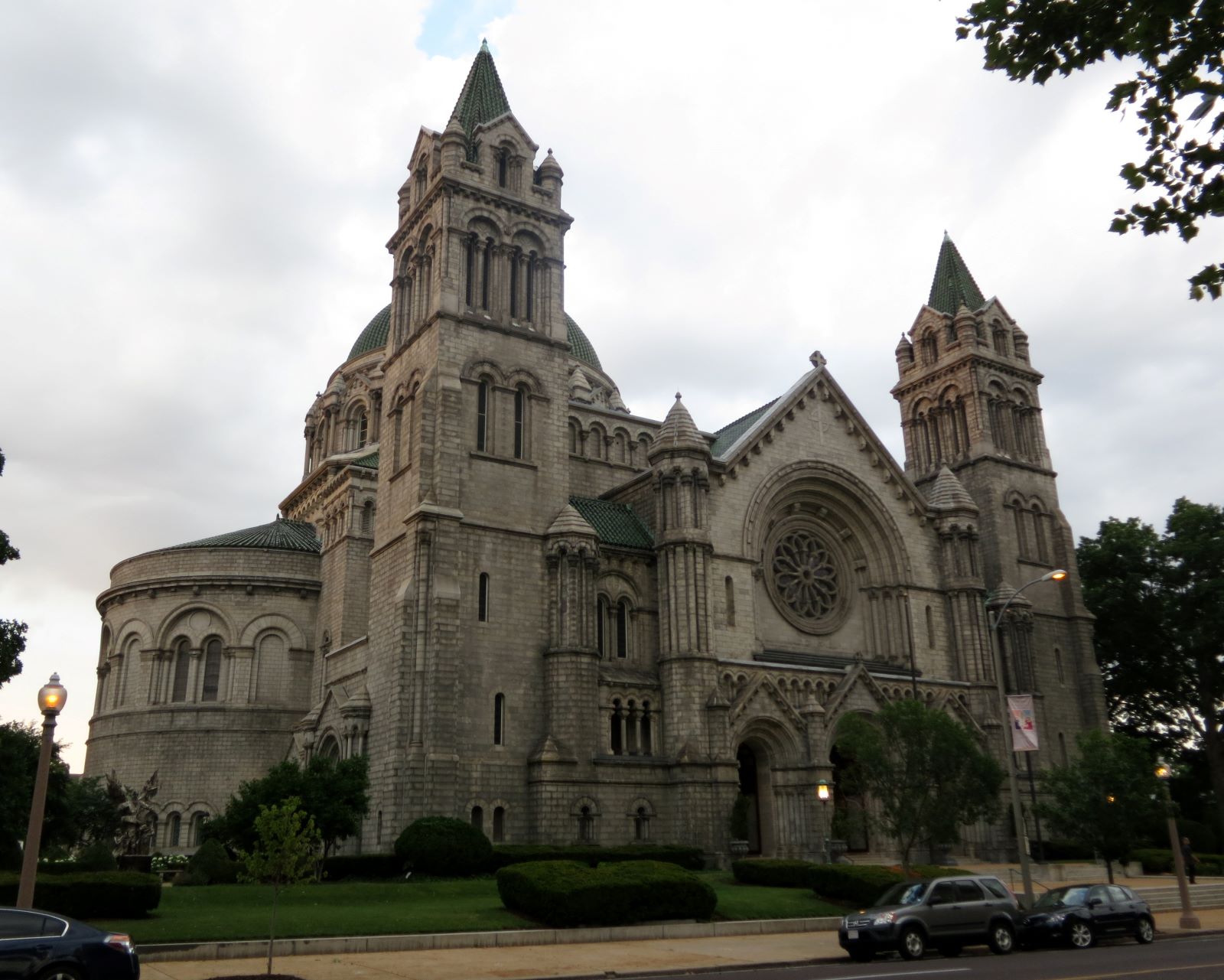Home>Arts and Culture>When Was Basilica Of St. Denis Built


Arts and Culture
When Was Basilica Of St. Denis Built
Published: February 10, 2024
Ericka Andersen, an editor at Christian.net, expertly merges digital strategy with content creation, focusing on faith and societal issues. Her communication skills enhance the platform's engaging narratives, fostering meaningful dialogue on belief's impact on society.
Discover the rich history of the Basilica of St. Denis, a masterpiece of arts and culture, built in the 12th century and steeped in architectural significance. Uncover the origins of this iconic landmark and its enduring cultural impact.
(Many of the links in this article redirect to a specific reviewed product. Your purchase of these products through affiliate links helps to generate commission for Christian.net, at no extra cost. Learn more)
Table of Contents
Introduction
The Basilica of St. Denis stands as a testament to the rich tapestry of history, art, and spirituality that has woven through the centuries. This magnificent architectural marvel, located in the northern suburbs of Paris, France, holds a revered place in the annals of religious and cultural heritage. As the final resting place of numerous French monarchs, including the illustrious King Louis XVI and Marie Antoinette, the basilica exudes an aura of regal grandeur and historical significance.
Stepping into the hallowed halls of the Basilica of St. Denis is akin to embarking on a journey through time, where the whispers of the past echo through its sacred corridors. The interplay of light and shadow dances upon the ancient stones, casting a spellbinding ambiance that beckons visitors to delve into the depths of its storied past.
This awe-inspiring edifice serves as a living chronicle of the evolution of architectural prowess, bearing witness to the transition from Romanesque to Gothic styles. Its soaring spires and intricate carvings stand as a testament to the ingenuity and craftsmanship of the artisans who toiled to bring this vision to life.
The Basilica of St. Denis is not merely a structure of stone and mortar; it is a living testament to the enduring legacy of faith, art, and human endeavor. Its walls resonate with the collective prayers of countless pilgrims and the whispered secrets of bygone eras, creating an atmosphere that transcends the boundaries of time and space.
As we embark on a journey to unravel the mysteries and marvels of this iconic basilica, we are poised to delve into the heart of a monument that has withstood the tides of history and emerged as a beacon of cultural heritage. Join us as we traverse the corridors of time and immerse ourselves in the captivating saga of the Basilica of St. Denis, where the past converges with the present in a symphony of splendor and reverence.
Read more: When Was The St. Peter Basilica Built
History of the Basilica of St. Denis
The history of the Basilica of St. Denis is a captivating tapestry woven with threads of legend, faith, and royal legacy. Its origins can be traced back to the 3rd century when a Christian martyr named Saint Denis met his tragic fate on the hilly terrain that would later become the site of this illustrious basilica. Legend has it that after being decapitated, Saint Denis picked up his severed head and walked several miles, preaching all the while. This miraculous display of unwavering faith and devotion earned him the veneration of the masses and eventually led to the construction of a small chapel in his honor.
The humble chapel evolved over the centuries, gradually expanding in size and significance. However, it was not until the patronage of the Merovingian kings that the basilica began to take on its grandeur. King Dagobert I, in the 7th century, played a pivotal role in elevating the stature of the basilica by commissioning the construction of a larger church to enshrine the relics of Saint Denis. This marked the beginning of a legacy that would see the basilica evolve into a monumental architectural masterpiece and a revered pilgrimage site.
The basilica's historical trajectory was not without tumultuous chapters. It weathered the ravages of time and witnessed the ebb and flow of political and religious upheavals. The French Revolution, in particular, cast a shadow of uncertainty over the basilica, leading to the desecration of royal tombs and the plundering of its treasures. However, the spirit of the basilica endured, emerging from the ashes of adversity with an unyielding resilience that mirrored the indomitable spirit of the French people.
Today, the Basilica of St. Denis stands as a living testament to the enduring legacy of faith, art, and regal heritage. Its storied past is etched into every stone, every arch, and every stained glass window, bearing witness to the triumphs and tribulations that have shaped its destiny. As we delve deeper into the annals of its history, we unravel a saga that intertwines the divine, the royal, and the human, creating a narrative that transcends the boundaries of time and resonates with the echoes of centuries past.
Construction of the Basilica
The construction of the Basilica of St. Denis stands as a testament to the ingenuity, craftsmanship, and unwavering devotion of the artisans and visionaries who embarked on the monumental task of bringing this architectural marvel to life. The evolution of the basilica's construction mirrored the shifting tides of architectural styles and techniques, culminating in a masterpiece that seamlessly blended Romanesque and Gothic elements.
The earliest phase of construction can be traced back to the 7th century, under the patronage of King Dagobert I, who sought to enshrine the relics of Saint Denis in a grander edifice. The basilica began as a modest church, but subsequent rulers and architects infused it with grandeur and magnificence, expanding its dimensions and embellishing its façade with ornate carvings and sculptures.
One of the most remarkable aspects of the basilica's construction is its pivotal role in the transition from Romanesque to Gothic architecture. As the demand for larger, more awe-inspiring structures grew, architects and builders sought innovative solutions to achieve soaring heights and ethereal lightness. The Basilica of St. Denis became a crucible for experimentation, giving rise to the pointed arches, ribbed vaults, and flying buttresses that would come to define the Gothic style.
The construction of the basilica was not merely a feat of engineering; it was a labor of love and reverence. Skilled stonemasons, artisans, and craftsmen poured their hearts and souls into every intricately carved column, every delicate tracery, and every resplendent stained glass window. Their dedication and expertise breathed life into the stone, transforming it into a symphony of architectural splendor that continues to captivate and inspire visitors to this day.
As the basilica's construction unfolded over the centuries, it bore witness to the evolution of architectural techniques and the fusion of artistic influences. The interplay of light and shadow, the soaring heights of the nave, and the ethereal beauty of the rose windows all stand as a testament to the collective genius of the architects and artisans who labored to realize this transcendent vision.
The construction of the Basilica of St. Denis stands as a testament to the enduring legacy of human creativity, faith, and architectural innovation. It is a living embodiment of the aspirations and achievements of generations past, beckoning visitors to marvel at the harmonious union of stone and spirit that defines this timeless masterpiece.
Architectural Features
The Basilica of St. Denis stands as a paragon of architectural magnificence, boasting a myriad of features that epitomize the evolution of medieval construction and the transition from Romanesque to Gothic styles. As one traverses the hallowed halls of this venerable edifice, a symphony of architectural marvels unfolds, captivating the senses and stirring the soul.
Romanesque Foundations
The basilica's architectural journey commenced with Romanesque influences, evident in the sturdy columns, rounded arches, and robust walls that form the nucleus of the structure. These foundational elements, imbued with a sense of solidity and permanence, lay the groundwork for the grandeur that would later unfold within its sacred precincts.
Read more: When Was St. Mary’s Basilica Built
Transition to Gothic Splendor
As the basilica evolved, it became a crucible for the experimentation and innovation that would define the Gothic style. The infusion of pointed arches, ribbed vaults, and flying buttresses ushered in a new era of architectural daring, allowing for lofty heights and ethereal lightness that seemed to defy earthly constraints. The soaring nave, adorned with delicate tracery and intricate carvings, stands as a testament to the audacious vision of the architects who sought to elevate the basilica to celestial heights.
Ethereal Beauty of Stained Glass
One of the most enchanting features of the basilica is its resplendent stained glass windows, which bathe the interior in a kaleidoscope of ethereal hues. These masterpieces of glasswork depict biblical narratives, celestial visions, and the lives of saints, casting a luminous glow that suffuses the sacred space with an otherworldly ambiance. The interplay of light and color, filtered through the intricate patterns of the stained glass, creates a transcendent experience that transports visitors to a realm of divine splendor.
Sculptural Marvels
The basilica's façade and interior abound with sculptural marvels that bear the imprint of master artisans. Intricately carved capitals, ornate reliefs, and imposing statues adorn the archways and chapels, each bearing witness to the consummate skill and artistry of the craftsmen who breathed life into the stone. Every sculpted figure seems to pulsate with vitality, narrating tales of faith, valor, and transcendence that resonate through the ages.
The Majesty of Rose Windows
No exploration of the basilica's architectural splendor would be complete without beholding the majesty of its rose windows. These circular stained glass marvels, adorned with elaborate tracery and vibrant hues, serve as celestial portals that infuse the interior with a divine luminescence. The intricate patterns and radiant colors of the rose windows evoke a sense of celestial harmony, inviting contemplation and awe in equal measure.
In essence, the architectural features of the Basilica of St. Denis converge to create a symphony of grandeur, spirituality, and artistic mastery. Each element, from the robust Romanesque foundations to the soaring Gothic vaults, bears the indelible mark of human ingenuity and devotion, inviting visitors to embark on a transcendent journey through the annals of architectural history.
Read more: When Was The Basilica In DC Built
Significance of the Basilica
The Basilica of St. Denis stands as a hallowed testament to the intertwining legacies of faith, royalty, and architectural innovation, encapsulating a profound significance that transcends the boundaries of time and space. Its historical, cultural, and spiritual import resonates through the annals of French history and the broader tapestry of Western civilization, imbuing it with a significance that extends far beyond its physical dimensions.
Cradle of Gothic Architecture
As the final resting place of numerous French monarchs, including the illustrious King Louis XVI and Marie Antoinette, the basilica holds a revered place in the annals of regal heritage. Its significance as the necropolis of French royalty underscores its role as a custodian of the nation's dynastic legacy, preserving the memory and lineage of monarchs who shaped the course of French history. The basilica's sacred precincts bear witness to the grandeur and tumult of royal narratives, offering visitors a poignant glimpse into the lives and legacies of the crowned figures interred within its hallowed confines.
Architectural Innovation and Influence
The Basilica of St. Denis occupies a pivotal position in the evolution of architectural styles, serving as a crucible for the transition from Romanesque to Gothic aesthetics. Its soaring vaults, pointed arches, and resplendent stained glass windows epitomize the daring spirit of Gothic innovation, inspiring a wave of architectural emulation across Europe. The basilica's influence reverberates through the centuries, leaving an indelible mark on the trajectory of medieval and Renaissance architecture, and serving as a touchstone for the artistic and engineering achievements of the era.
Spiritual Pilgrimage and Cultural Heritage
For pilgrims and visitors alike, the basilica holds profound spiritual and cultural significance. Its status as a revered pilgrimage site draws the faithful and the curious from far and wide, beckoning them to traverse the sacred thresholds and partake in the aura of sanctity that permeates its venerable halls. The basilica's spiritual resonance transcends denominational boundaries, offering solace, inspiration, and a tangible connection to the divine for all who seek communion with the sacred.
Read more: Who Built St. Peter’s Basilica
Living Chronicle of History
The Basilica of St. Denis stands as a living chronicle of the triumphs and tribulations that have shaped the course of French and European history. Its venerable stones bear the scars of revolution, war, and restoration, embodying the resilience and enduring spirit of the French people. As a repository of royal tombs, artistic treasures, and historical narratives, the basilica weaves a compelling tapestry of human endeavor, faith, and cultural heritage, inviting visitors to immerse themselves in the timeless saga of the French nation.
In essence, the Basilica of St. Denis transcends its role as a mere architectural marvel; it embodies the collective memory, aspirations, and spiritual yearnings of a nation and a civilization. Its significance reverberates through the corridors of time, inviting all who behold it to partake in the grandeur and profundity of its storied legacy.
Conclusion
In the heart of the northern suburbs of Paris, the Basilica of St. Denis stands as a testament to the enduring legacy of faith, art, and regal heritage. Its storied past, intricately woven with threads of history, architectural innovation, and spiritual resonance, beckons visitors to embark on a transcendent journey through the annals of time.
As we bid adieu to the hallowed halls of the basilica, we carry with us the echoes of centuries past, the whispered prayers of pilgrims, and the resplendent visions of Gothic splendor. The basilica's significance transcends its physical dimensions, weaving a narrative that intertwines the divine, the royal, and the human, creating a tapestry of cultural heritage that resonates with the soul.
The Basilica of St. Denis stands as a living chronicle of history, bearing witness to the triumphs and tribulations that have shaped the course of French and European history. Its venerable stones, resplendent stained glass windows, and soaring vaults embody the resilience and enduring spirit of the French people, inviting visitors to immerse themselves in the timeless saga of the French nation.
As we step out into the embrace of the present, the basilica's significance lingers in our hearts, inspiring awe and reverence for the enduring legacy it represents. It is a sanctuary of art, faith, and human endeavor, a testament to the indomitable spirit of the human soul reaching for the divine.
The Basilica of St. Denis is not merely a structure of stone and mortar; it is a living testament to the enduring legacy of faith, art, and human aspiration. Its walls resonate with the collective prayers of countless pilgrims and the whispered secrets of bygone eras, creating an atmosphere that transcends the boundaries of time and space.
As we bid farewell to this venerable edifice, we carry with us the indelible imprint of its significance, a tapestry of history, art, and spirituality that continues to weave its magic through the corridors of time. The Basilica of St. Denis stands as a beacon of cultural heritage, inviting all who behold it to partake in the grandeur and profundity of its storied legacy.












